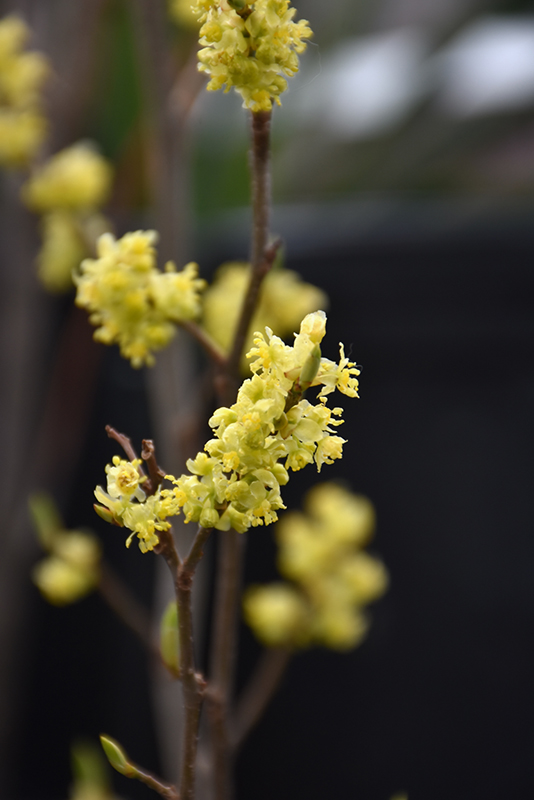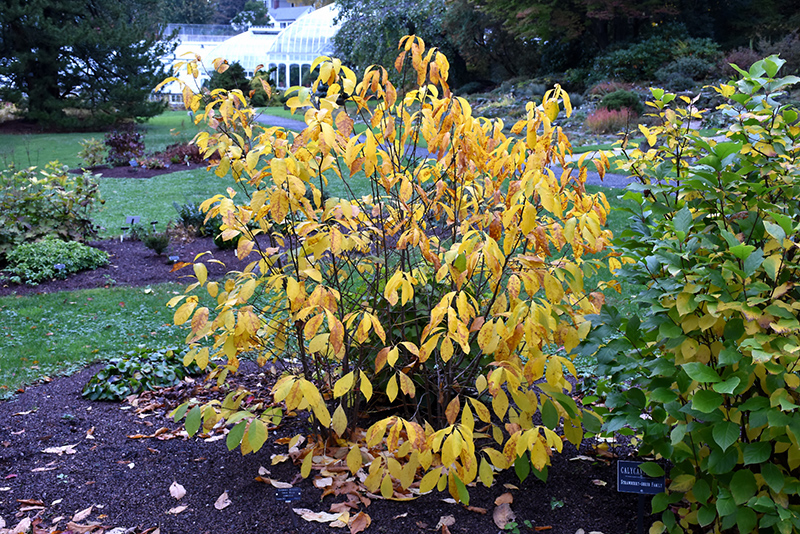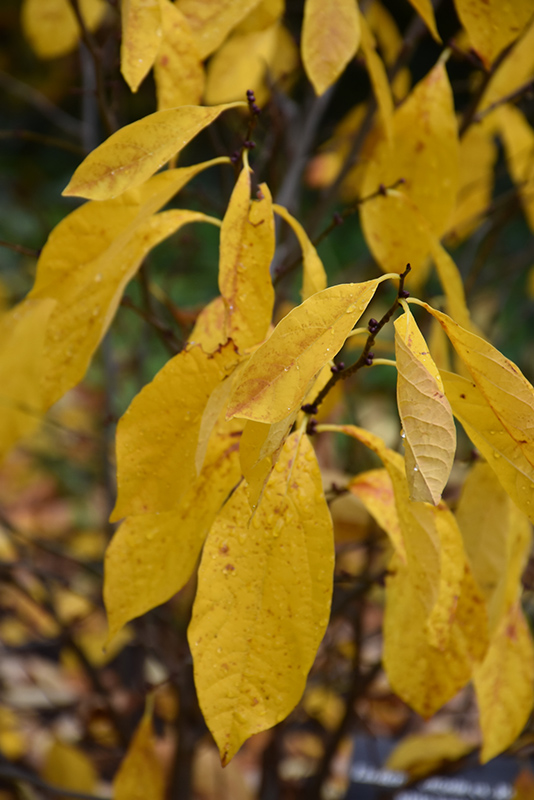Height: 10 feet
Spread: 10 feet
Sunlight:
![]()
![]()
![]()
Hardiness Zone: 4b
Description:
An uncommon shrub with many ornamental qualities; radiant yellow flowers in early spring before the leaves followed by showy red berries in fall, beautiful gold fall color and fragrant foliage; a shapely garden shrub, blends nicely into natural settings
Ornamental Features
Spicebush features delicate lemon yellow flowers along the branches in early spring before the leaves. It has light green deciduous foliage. The pointy leaves turn an outstanding gold in the fall. It produces red berries from early to late fall. The smooth olive green bark adds an interesting dimension to the landscape.
Landscape Attributes
Spicebush is a multi-stemmed deciduous shrub with a more or less rounded form. Its average texture blends into the landscape, but can be balanced by one or two finer or coarser trees or shrubs for an effective composition.
This is a relatively low maintenance shrub, and should only be pruned after flowering to avoid removing any of the current season's flowers. Deer don't particularly care for this plant and will usually leave it alone in favor of tastier treats. It has no significant negative characteristics.
Spicebush is recommended for the following landscape applications;
- General Garden Use
- Naturalizing And Woodland Gardens
Planting & Growing
Spicebush will grow to be about 10 feet tall at maturity, with a spread of 10 feet. It has a low canopy with a typical clearance of 2 feet from the ground, and is suitable for planting under power lines. It grows at a slow rate, and under ideal conditions can be expected to live for 40 years or more.
This shrub performs well in both full sun and full shade. It prefers to grow in average to moist conditions, and shouldn't be allowed to dry out. It is not particular as to soil pH, but grows best in rich soils. It is somewhat tolerant of urban pollution. Consider applying a thick mulch around the root zone in winter to protect it in exposed locations or colder microclimates. This species is native to parts of North America.









